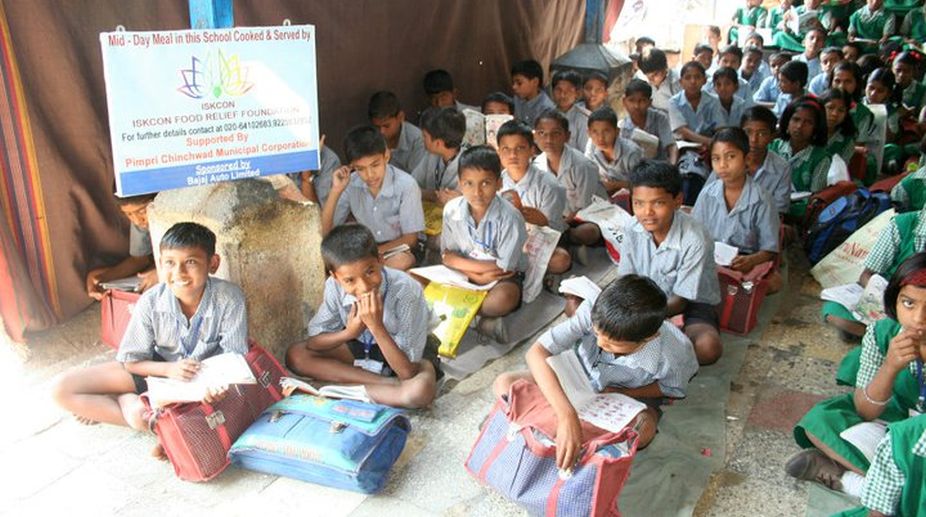TMC and BJP leaders join in Ram Navami celebrations across state
With active participation from the ruling Trinamul Congress and its rival BJP, in separate programmes, Ram Navami was celebrated across the state peacefully till Wednesday evening.

Representational Image (PHOTO: Facebook)
The mid-day meal, a benchmark for the evaluation of the effectiveness of the Right to Education Act, has assumed disgraceful proportions in the Bharatiya Janata Party's Gujarat. It is a measure of the pronounced caste divide that a contrived social inequality is almost institutionalised. It thus comes about that children from the “lower castes” are the victims of adult-sponsored stratification in course of their search for learning.
In practice, the discourse over a caste-based census — that preceded the last enumeration in 2011 — is set to reinforce social distinctions at a tender age when nothing if not learning ought to be of uppermost concern in the putative schools.
The quality of instruction be damned; more to the point, in the reckoning of the administration and Gujarat’s school authorities, is to sustain the societal distinctions. As reported in this newspaper, these children of the supposedly lower castes are made to sit separately during meals. A more grotesque form of social injustice would be difficult to imagine.
Advertisement
The revelation is based on empirical evidence, indeed the upshot of the ‘chintan shibir’ — a BJP embroidery — that the state government had organised for principals of schools, teachers, and worthies of the education department. For once, the searchlight has been turned inwards, and the sclerosis in the primary segment has been reinforced.
Mere reflection on the malaise is only an attempt to play to the birds. The praxis of caste-based sitting arrangements must urgently be abolished. More accurately, the canker of societal injustice has permeated the system… from marriage to meals. The underbelly of the quota construct is suggestive of man’s inhumanity to man, on closer reflection the adult's inhumanity towards the child.
Decidedly revolting must be the argument advanced by teachers — that if the children of all castes are made to sit together, many upper caste parents will withdraw their kids from the school. Discrimination against and persecution of Dalits in Gujarat is not confined to the skinning of cattle and consumption of beef; the malaise has affected education in no less a sinister fashion.
Of a piece with this almost overwhelming injustice, based on caste, has been the recent case of an upper caste woman teacher assaulting the headmaster who had asked her to fetch stationery from a Dalit.
The loop lengthens with frequent reports of access to village wells being denied, separate drinking water arrangements for Dalits in jails, grooms being made to disembark from horses during the wedding procession, denial of a hair-cut in saloons, or a Dalit being beaten up for twirling his moustache.
It is a cruel irony that the agenda of the ‘chintan shibir’ was “improving the quality of primary education”. For all the juggling with figures of the Human Development Index, rural Gujarat exemplifies the development of under-development.
Advertisement